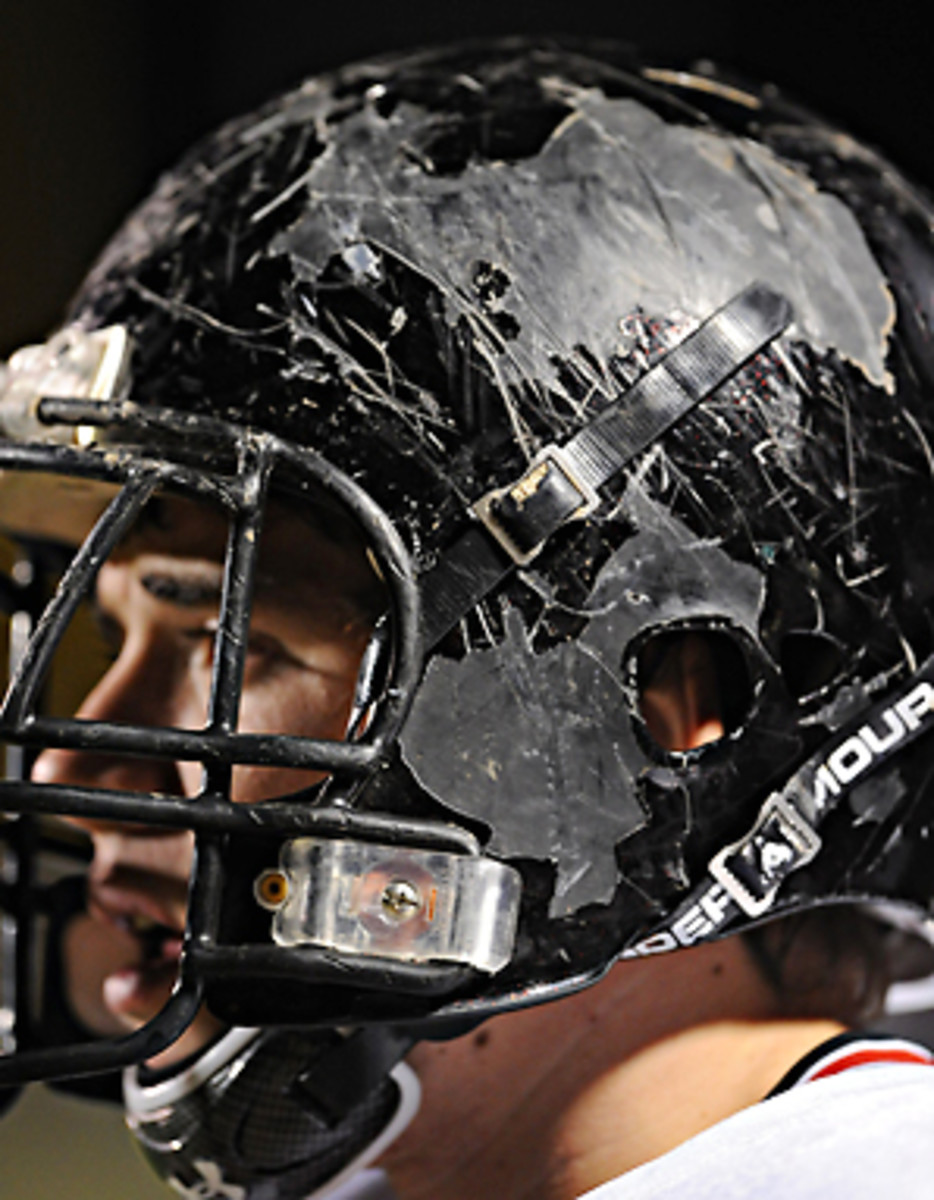Unique study explores cumulative effect of hits in high school football
The reason I honed in on this particular study was that, rather than dissecting the brains of deceased players to look for signs of chronic traumatic encephalopathy (CTE), this group was following young players over the course of a season to see if they could document brain impairment in real time. In other words, as opposed to a "cross-sectional" study -- in which observations are made at a single point in time, but the cause/effect relationship cannot be definitively established -- this study was longitudinal, meaning that it would track players over the course of the season.
The researchers put accelerometers in the helmets of players at Jefferson High School in Lafayette, Ind. with the intention of measuring the G-forces of hits that caused concussions. The idea was then to give the players tests of memory and focus as well as to take pictures of their brain activity using functional magnetic resonance imaging (fMRI) to see just how a concussion altered cognitive processing.
But when the researchers started dragging in apparently healthy non-concussed players for memory tests and fMRI's to establish a control group, they were surprised to discover that several players had impaired brain functioning despite not having suffered a concussion. Ultimately, the study found that the sheer number of hits that a player had taken over the previous week, completely irrespective of whether a concussion had been suffered, was the best predictor of brain impairment.
As I wrote last November, this is particularly scary, because it means that the vast majority of brain damage in football players might be occurring in the absence of any easily recognizable symptoms or of a particularly bell-clanging hit.
The Purdue researchers recently finished analyzing the second year of their Jefferson High data -- which was discussed as part of Frontline's "Football High" special on PBS -- and it has shown more of the same. Of the 31 times that the researchers brought in non-concussed players to do neurocognitive testing, 17 produced impaired scores. "That's 17 players who were not expected to be impaired," said Tom Talavage, a Purdue associate professor of biomedical engineering and electrical and computer engineering.
The fMRI data has backed up the results from the first season as well, in that the pattern of brain activity in impaired players changes when they are asked to do a task that requires mental focus. In tests where players are asked to briefly recall letters that have been flashed before them, the impaired players appear to require more cognitive resources to complete the relatively simple task. It's as if the brain is a damaged engine that suddenly needs to use more horsepower than should be necessary just to get the vehicle down the block. "They can still do the test," Talavage said, "but not in the same manner as when they were healthy."
On the bright side, so far kids in the study have returned to normal brain functioning after the season. The Purdue researchers hope they can one day pin down just how many hits it takes before someone is set irreparably on the path to CTE. Since the number of hits taken in the prior week has proven in both seasons of the study to be the best predictor of brain impairment, Talavage envisions one possible solution: monitoring hits as one would monitor a pitcher's pitch count. "If we can just slow down the accumulated damage so that we don't pass whatever threshold leads to CTE," Talavage said, "then that's a win. That's the same for most people as eliminating the problem."
Now that we pretty much know what to expect when the brain of a deceased ex-NFL player is examined -- a buildup of tau proteins that are the hallmark of CTE -- longitudinal studies like the one at Purdue hold the key to figuring out how to make the game safer.





